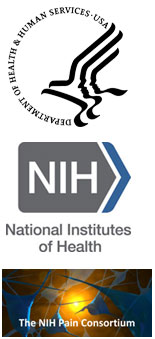Chronic pain is estimated to affect over one-quarter of the world's population, and presents a considerable therapeutic challenge. This Nature Collection, sponsored by the NIH Pain Consortium, brings together articles from Nature, Nature Medicine, Nature Neuroscience, Nature Reviews Neurology and Nature Reviews Neuroscience that highlight recent advances towards understanding the risk factors and mechanisms that underlie chronic pain, and developing effective, non-addictive treatments for this highly prevalent condition.
NEWS & VIEWS
Structural biology: How opioid drugs bind to receptors
Marta Filizola & Lakshmi A. Devi
doi:10.1038/485314a
Nature 485, 314-317 (2012)
ORIGINAL RESEARCH PAPERS
Blockade of PDGFR-β activation eliminates morphine analgesic tolerance
Yan Wang, Katherine Barker, Shanping Shi, Miguel Diaz, Bing Mo & Howard B. Gutstein
doi:10.1038/nm.2633
Nature Medicine 18, 385-387 (2012)
Epigenetic suppression of GAD65 expression mediates persistent pain
Zhi Zhang, You-Qing Cai, Fang Zou, Bihua Bie & Zhizhong Z. Pan
doi:10.1038/nm.2442
Nature Medicine 17, 1448-1455 (2011)
Corticostriatal functional connectivity predicts transition to chronic back pain
Marwan N. Baliki, Bogdan Petre, Souraya Torbey, Kristina M. Herrmann, Lejian Huang, Thomas J. Schnitzer, Howard L. Fields & A. Vania Apkarian
doi:10.1038/nn.3153
Nature Neuroscience 15, 1117-1119 (2012)
REVIEWS
Can neuroimaging studies identify pain endophenotypes in humans?
Irene Tracey
doi:10.1038/nrneurol.2011.4
Nature Reviews Neurology 7, 173-181 (2011)
Much is still to be learned regarding how nociceptive stimuli, genes and various other factors influence the generation and maintenance of pain. In this article, Irene Tracey examines possible neuroimaging endophenotypes of pain that could act as measurable markers of this condition. Such markers would assist both the management of and research into acute and chronic pain.
The NaV1.7 sodium channel: from molecule to man
Sulayman D. Dib-Hajj, Yang Yang, Joel A. Black & Stephen G. Waxman
doi:10.1038/nrn3404
Nature Reviews Neuroscience 14, 49-62 (2013)
Mutations in SCN9A, which encodes the voltage-gated sodium channel NaV1.7, can lead to severe neuropathic pain in humans. In this Review, Waxman and colleagues examine the mechanistic basis of NaV1.7-linked pain and explore strategies for targeting this channel in pain therapy.
PERSPECTIVES
Sex differences in pain and pain inhibition: multiple explanations of a controversial phenomenon
Jeffrey S. Mogil
doi:10.1038/nrn3360
Nature Reviews Neuroscience 13, 859-866 (2012)
Chronic pain is more prevalent in women than in men. In this Perspective, Jeffrey Mogil argues that this sex bias in clinical pain is due to a sex difference in pain sensitivity and discusses various underlying mechanisms that might account for this difference.



